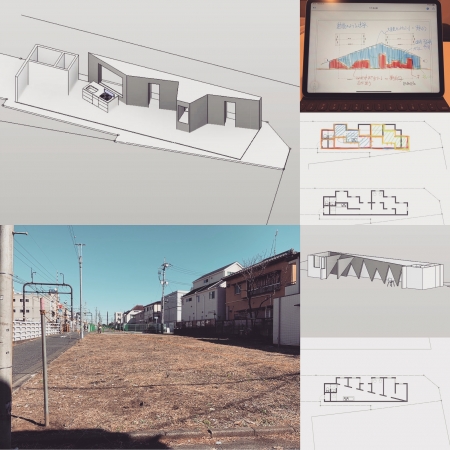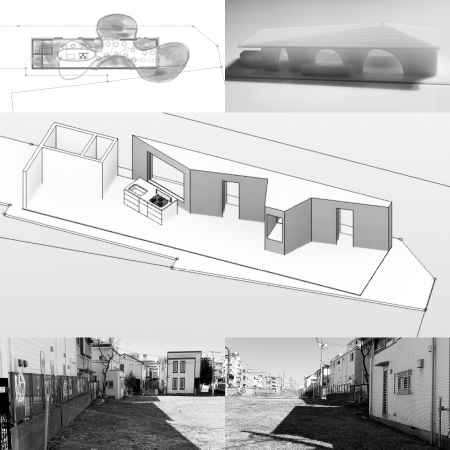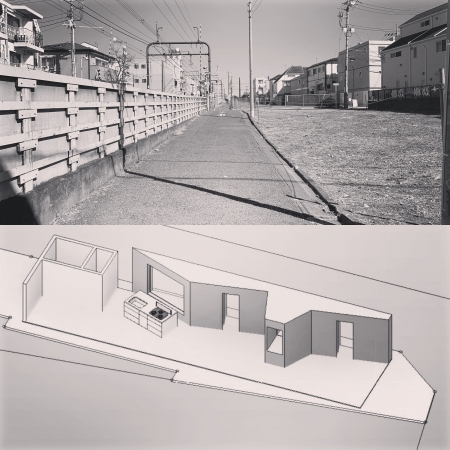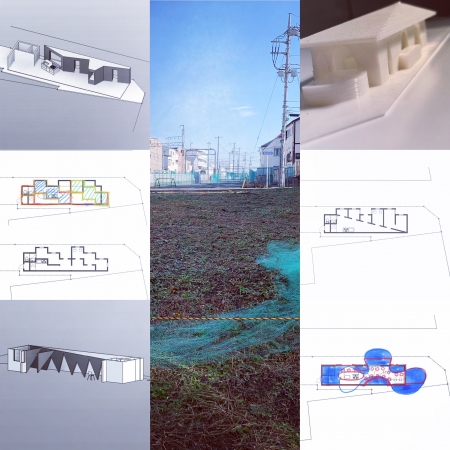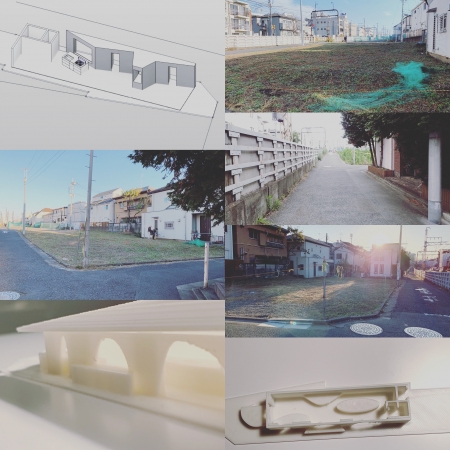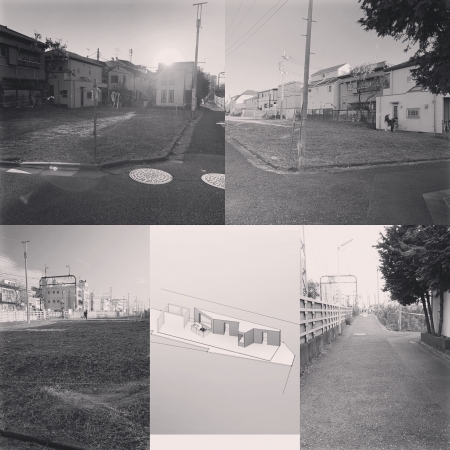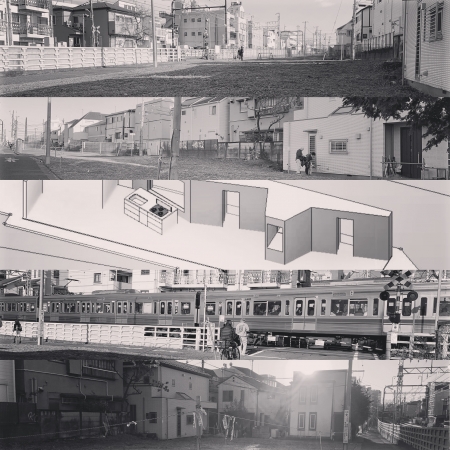外皮を必要としない前提
敷地境界線の中に留まって建築を考えることが有効になる前提を考える場合、外からと内からの両面の可能性がある。外からは環境との遮断、周辺環境との関係性が全く途切れてしまうことで、内からは建築内部の空間が圧倒的に優位になることで、外と内の両面が同時に存在していなくても良く、どちらか片方だけで良いだろう。
周辺環境との遮断は視覚的に見えない状況がつくられただけでも起きる。また、建築内部の空間が圧倒的に優位になる状況は外皮を必要としない状況であり、内部空間だけが存在すれば建築が成り立つ状況だろう。
視覚的に見えない状況は周辺環境の要因にも左右されるので自らだけで完結してつくり出すことはできないが、外皮を必要としない状況は自ら完結してつくり出すことができるので前提とするにはより向いている。
"Premise that does not require exodermis"
When considering the premise that it is effective to stay within the boundary of the site and think about architecture, there is a possibility of both from the outside and from the inside. The space inside the building becomes overwhelmingly superior from the outside because it is cut off from the environment and the relationship with the surrounding environment is completely cut off, so both the outside and the inside do not exist at the same time. You can do it, and only one of them will do.
Isolation from the surrounding environment occurs even if a situation that is not visually visible is created. In addition, the situation where the space inside the building is overwhelmingly superior is the situation where the outer skin is not required, and the situation where the building can be established if only the interior space exists.
Since the situation that cannot be seen visually depends on the factors of the surrounding environment, it cannot be created by itself, but the situation that does not require the exodermis can be created by itself, so it is a prerequisite. It is more suitable.

